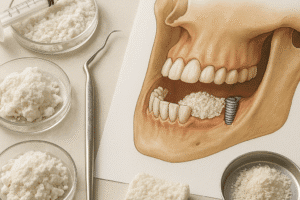Regular physical activity plays a vital role in maintaining and improving skeletal health. Within the human body, bones continually undergo cycles of breakdown and formation, adapting to the forces placed upon them. When exercise is performed consistently and correctly, it can stimulate bone density gains, reduce the likelihood of osteoporosis, and lower fracture risk. This article explores the physiological mechanisms behind these benefits, highlights the most effective exercise types, and discusses how nutrition and lifestyle factors contribute to optimal bone health.
Importance of Regular Exercise for Bone Strength
Bone Remodeling and Adaptation
Bones are dynamic tissues, constantly undergoing a process called remodeling. Specialized cells known as osteoblasts build new bone, while osteoclasts break down old or damaged tissue. This balance ensures structural integrity and allows bones to adapt to changing demands. Mechanical stress from exercise triggers an increase in osteoblast activity, leading to enhanced mineralization and overall bone mass.
Mechanisms of Mechanical Stimuli
When you lift weights, jump, or run, your skeleton experiences forces that exceed those encountered during sedentary activities. These forces, referred to collectively as mechanical load, create tiny deformations in bone tissue. Osteocytes—another type of bone cell—sense these deformations and initiate signaling pathways that encourage remodeling. Over time, bones adapt by becoming thicker and stronger at the stress points, leading to increased resistance training benefits for overall skeletal integrity.
Key Exercise Modalities that Enhance Bone Density
- Weight-Bearing Aerobics: Activities such as brisk walking, stair climbing, and dancing force the body to work against gravity, stimulating bone growth.
- Resistance Training: Using free weights, machines, or bodyweight exercises creates targeted stress on bones, prompting localized strengthening.
- High-Impact Activities: Running, jumping rope, and plyometrics generate short, intense bursts of force that effectively challenge bone structure.
- Balance and Functional Exercises: Yoga, tai chi, and stability drills improve coordination and may reduce falls, thereby lowering fracture incidence in older adults.
Weight-Bearing Aerobic Workouts
Engaging in regular weight-bearing aerobics encourages new bone formation, especially in the hips, spine, and legs. Over time, participants often experience improved gait, posture, and joint stability. These exercises should be performed at least three times per week for optimal results.
Resistance and Strength Training
Resistance training remains one of the most effective strategies for increasing bone mineral density. By gradually increasing load and intensity, the musculoskeletal system responds by reinforcing bone architecture. Key components include progressive overload, proper form, and adequate recovery between sessions. Aim to work major muscle groups two to three times weekly, allowing for 48 hours of rest between sessions targeting the same region.
Nutritional Synergy and Lifestyle Considerations
Calcium, Vitamin D, and Mineral Intake
Calcium serves as a fundamental building block for skeletal tissue, while vitamin D facilitates its absorption in the intestines. Without adequate levels of both, the bones may weaken despite regular exercise. Consuming dairy products, leafy greens, fortified foods, and exposing skin to sunlight can help maintain optimal calcium absorption and vitamin D status. Additional micronutrients—such as magnesium, phosphorus, and vitamin K—further support the process of bone mineralization.
Hormonal Balance and Metabolic Factors
Hormones such as estrogen, testosterone, and growth hormone significantly influence bone turnover. In women, estrogen helps preserve bone mass, and its decline during menopause can accelerate bone loss. Both men and women benefit from exercise-induced improvements in hormonal balance, which can mitigate age-related decreases in bone density. Proper sleep, stress management, and avoidance of smoking and excessive alcohol are also crucial for maintaining hormonal health.
Designing an Effective Bone-Strengthening Routine
Progressive Overload and Periodization
A successful bone-strengthening program follows the principle of progressive overload—gradually increasing the intensity, volume, or complexity of exercises. Periodization, or cycling through different phases of training (e.g., endurance, hypertrophy, strength), allows the skeleton to adapt continuously while preventing plateaus. Consult a qualified professional to customize programs based on age, current fitness level, and any existing medical conditions.
Incorporating Balance and Mobility
Integrating balance and mobility drills into your routine can reduce the risk of falls and subsequent fractures. Exercises such as single-leg stands, heel-to-toe walks, and dynamic stretches enhance proprioception and joint stability. These functional elements complement high-impact and resistance training, offering a holistic approach to skeletal health.
Recovery, Rest, and Injury Prevention
Despite the benefits of exercise, inadequate rest can hamper bone adaptation and elevate injury risk. Bones recover and strengthen primarily during rest periods following mechanical stress. Ensure proper nutrition, hydration, and sleep to support the remodeling process. Employ techniques like foam rolling, gentle stretching, and periodic deload weeks to prevent overuse injuries and maintain long-term progress.
Special Populations and Precautions
Children and Adolescents
During growth years, bones are highly responsive to mechanical stimuli. Encouraging youth participation in sports, jumping activities, and strength training under supervision can build a robust skeletal foundation that extends into adulthood. However, monitoring intensity and technical form is essential to avoid growth plate injuries.
Postmenopausal Women
This group faces accelerated bone loss due to hormonal changes. A combination of weight-bearing exercises, resistance training, and balance work, along with appropriate pharmacological interventions when necessary, can substantially slow or reverse bone density decline. Regular screenings and consultations with healthcare professionals are recommended.
Elderly and Individuals with Osteoporosis
While exercise remains beneficial for older adults and those diagnosed with osteoporosis, modifications may be needed to minimize risk. Low to moderate impact weight-bearing activities, resistance bands, and supervised programs can deliver positive outcomes. Emphasis on balance and fall-prevention strategies is critical in this population.
Future Directions in Bone Health Research
Emerging studies are exploring the roles of genetic predispositions, novel biomarkers, and advanced imaging techniques in predicting individual responses to exercise interventions. Investigations into molecular pathways—such as Wnt signaling and sclerostin regulation—could yield targeted therapies that amplify the skeletal adaptations induced by physical activity. Personalized exercise prescriptions based on genetic profiling may soon become a reality, optimizing fracture risk reduction on an individual level.













